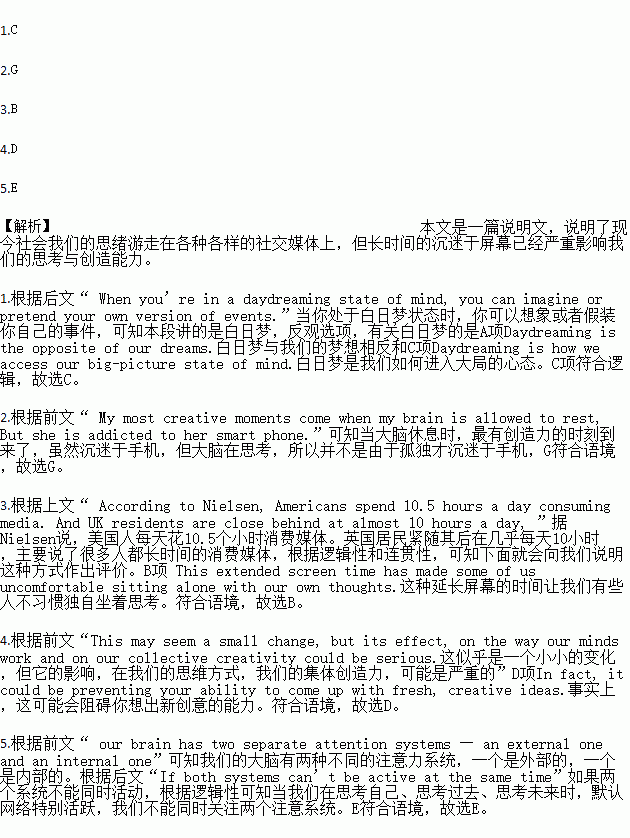题目内容
Humans have daydreamed for thousands of years, and yet, these days, spare moments are filled with using our smartphones and other devices—going through social media, listening to podcasts, responding to emails—leaving us little time to let our minds wander.
1. When you’re in a daydreaming state of mind, you can imagine or pretend your own version of events.
“My most creative moments come when my brain is allowed to rest” says Megan King, a designer. But she is addicted to her smart phone. 2. According to Nielsen, Americans spend 10.5 hours a day consuming media. And UK residents are close behind at almost 10 hours a day, according to eMarketer.
3. This may seem a small change, but its effect, on the way our minds work and on our collective creativity could be serious. 4.
Over years of studies, researchers have found that our brain has two separate attention systems — an external one and an internal one. The internal attention system, which is activated(激活)during daydreaming, is called the default network(默认网络).
The default network is particularly active when we are thinking about ourselves, thinking about the past, thinking about the future. 5.
If both systems can’t be active at the same time and we’re spending 10 hours a day in one attention system, it begs the question: what is that doing to our brains — and our ability to come up with creative ideas?
A. Daydreaming is the opposite of our dreams.
B. This extended screen time has made some of us uncomfortable sitting alone with our own thoughts.
C. Daydreaming is how we access our big-picture state of mind.
D. In fact, it could be preventing your ability to come up with fresh, creative ideas.
E. We can’t really have both attention systems active at the same time.
F. People spend too much time on screen suffer from headaches.
G. She's not alone.

